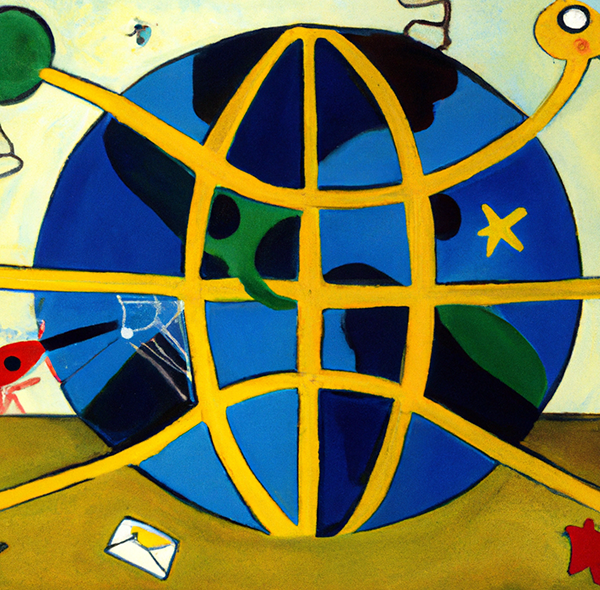
Picture If You Will
The Olympics have ended, but if you watched any of the events, and you are a designer, you may have paid attention to aspects of the games that more casual (or civilian) viewers may not have noticed: graphic design elements. So when the folks at Print magazine were watching, they couldn’t help noticing Olympic pictograms, or the small icons used to represent each sport.
It’s essential to have a visual language for the Olympic Games since many athletes and viewers speak different verbal languages. “Pictograms were designed to create a universal and easily understandable language,” writes Markus Osterwalder in his book Olympic Games – The Design. Osterwalder is a graphic designer and a bonafide Olympics historian obsessed with Olympics design.
Did you know that these pictograms are redesigned every Olympics so as to more seamlessly blend into the overall branding of a particular year’s games.
Every set of pictograms redefines the genre and marks a moment in time through their look, feel, and style. Clinton Yates of ESPN recently started a conversation around pictograms on X, referencing those designed for the 1988 Olympics in Seoul, South Korea.
So what about Paris 2024?
“Pictograms are a thing of the past,” the Paris 2024 Brand Director, Julie Matikhine
Doh! They opted instead for a “coat of arms” concept:
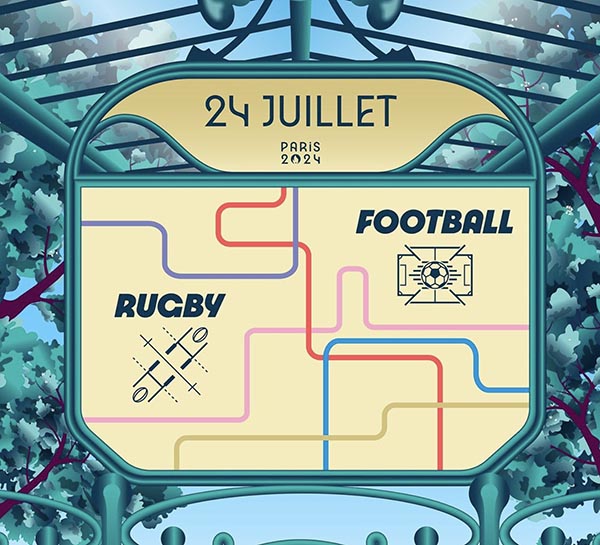
The set comprises 62 coats of arms across the Olympic and Paralympic Games, which are featured prominently throughout the city, venues and stadiums, television broadcasts, and everywhere else. Movement has been incorporated into each design, creating animated versions to add more intrigue and flair.
These coats of arms involve three basic elements:
- An axis of symmetry often mirrored across a diagonal.
- A depiction of the ground.
- A representation of the sport through a piece of equipment or gear affiliated with that sport, but not of the athletes themselves.
The folks at Print were not fans.
While many of these designs are visually compelling and pleasing, they are far less legible than the classic Olympic pictograms of yore. Given that pictograms’ primary purpose is clear and immediate communication, we must admit most of these coats of arms miss the mark. Bucking convention is commendable, but here’s hoping Los Angeles 2028 brings back actual pictograms.
We wonder if the Print staff held up those numbered scoring cards as they saw each coat of arms displayed.
States in Play
Do you play board games? They took off during the pandemic lockdowns in 2020, but some of us have not really played a board game since our youth, which was happily not so long ago as to have involved one called “The Travellers’ Tour Through the United States.” It was the first board game printed in the United States, and dates from 1822. Says Atlas Obscura:
Produced by the New York cartography firm of F. & R. Lockwood, “The Travellers’ Tour Through the United States” was an imitation of earlier European geography games, a genre of educational game. Geography games generally used a map for a board, and the rules involved players reciting geographic facts as they race toward the finish.
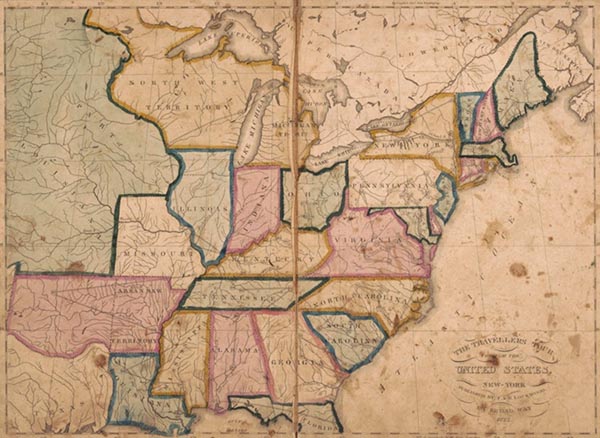
“The Travellers’ Tour” first appeared in 1822, making it the earliest known board game printed in the U.S. But for almost a century another game held that honor. In 1894, the game manufacturer Parker Brothers acquired the rights to “The Mansion of Happiness,” an English game first produced in the U.S. in 1843. In its promotional materials, the company declared it “The first board game ever published in America.”
It's unknown how popular it was, but probably not very, as there were not many copies found extant.
A global database of library holdings shows only five copies of “The Travellers’ Tour” in institutions around the U.S. And while a handful of additional copies are housed in museums and private archives, the game is certainly a rarity.
Plus it probably had to be updated every so often when new states were admitted.
Graphene Is On the Table
Was it a good week for graphene news? It’s always a good week for graphene news! Graphene-enhanced packaging aims to reduce contamination from microplastics and poly-fluoroalkyl substances (PFAS) in the US food supply. From (who else?) Graphene-Info:
This collaboration [between Chang Robotics, an engineering company, and Northwestern University’s INVO Lab] has led to the development of GOEco, an initiative that shows that very small amounts of graphene oxide can be infused into paper products or compostable packaging materials to replace plastic and PFAS. GOEco’s primary goal is to replace the widespread use of plastics in food packaging, such as paper plates and disposable utensils. The patent-pending technology helps enhance the environmental friendliness of disposable tableware without compromising functionality.
… Testing on the new packaging reportedly revealed that it offers superior food preservation qualities by preventing the transfer of moisture, oil, or gases, which could enhance food freshness compared to traditional plastic packaging.
They are still working on regulatory evaluations and approvals to confirm the safety of graphene oxide for food packaging use.
Pin Down
Last fall, we linked to the rollout of the so-called “Humane AI” pin, a small wearable device that is controlled by speaking aloud or projecting a display onto your hand. It is a kind of virtual assistant that can send text messages or emails, take a picture, translate a conversation into another language, etc.
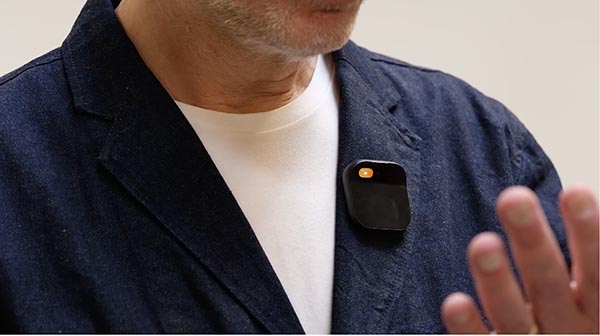
It finally began shipping not too long ago—and then people started shipping them back. Says Gizmodo:
Labeled the “worst product ever reviewed” by renowned tech YouTuber Marques Brownlee, Humane’s AI Pin saw a pretty rough start. Somehow, things only got worse for the AI gadget.
Oof. (“Renowned” YouTuber? Is that a thing?)
The Pin has recently been seeing more returns than sales, according to The Verge on Wednesday. In June, only about 8,000 units had not been returned, and as of Wednesday, that figure has fallen by another 1,000 meaning only around 7,000 units are still with their buyers, the report says.
Humane expected to sell around 100,000 Pins within its first year, but could only manage to sell around 10,000, according to a report from the New York Times back in June. That’s an incredibly stark difference, but nothing too surprising looking at all the negative feedback the Pin garnered in its first few months. We didn’t get our hands on the device but reviews for it claimed the Pin is buggy, slow, and battery life of just a few hours.
On top of that, it costs $700, as well as an additional $24 for a T-Mobile data plan. And the projection display apparently was hard to see outdoors. Even as far back as May, Humane was hoping to be acquired for up to $1 billion. Good luck with that.
They’re not alone. We were also skeptical about the Rabbit R1, another AI-powered mobile device that was supposedly going to take over the world, but that was an even bigger flop. Guess the old-fashioned computer and mobile phone will be around for a while longer.
Flying Car
Every once in a while, we link to new ideas for that most desired of all science-fiction conveyances, the flying car. This week, we saw one that looks like it would have been made by Q from the James Bond movies: The GOVE concept, by GAC. Via Core 77:
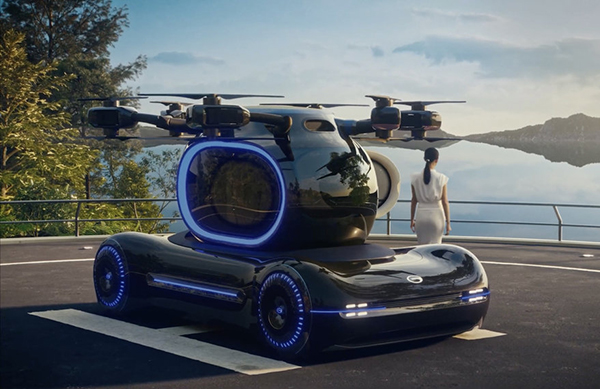
If the top bit kind of looks like a helicopter, that’s because it kind of is.

Yes, while cruising down the street, drone propellers unfurl from the top and the whirry bit takes off and flies away.
Now, you may be wondering what happens to the wheelie bit after the whirry bit takes off, and how much a traffic hazard that would be. Well…
The thinking is that after you lift off, the autonomous chassis drives itself to a charging station to top off, then reunites with you further down the road.
What could possibly go wrong?
At any rate, if this doesn’t make it into the next Bond film, they’ve missed a real opportunity.
I Scream for Museum
Here’s one from the “ruining it for everyone” file. Via Boing Boing, the Museum of Ice Cream has several locations, one of which is in New York. Apparently, a feature of this museum is a “Sprinkle Pool” (which, in New England, would no doubt be called a “Jimmy Pool”), which comprises a bunch of colored rubber tubes that are meant resemble sprinkles/jimmies. Museum promotional materials and social media allegedly invite guests to the museum to “jump in” and “take the plunge” into the Sprinkle Pool. You can see where this is going… Yes, someone not given to sensible life choices took the messaging a little too literally, jumped in, and broke his ankle. And, of course, sued the museum. Now, it should be fairly obvious that, unless these women and children are giants, this pool is only a couple of inches deep:

Also, is jumping feet first onto thousands of rubber cylinders a great idea?
There is also signage:

Although, to be honest, the presence of a diving board does confuse matters a little.
Another social media post with the text “Fall is coming. New sprinkles too. Have you taken the plunge yet?” is presented as further evidence that people are encouraged to jump in. However, in the video, everyone falls gently backward into the pool. No one jumps in feet first.
Regardless, unless you’re five, it’s probably a good idea to stay out of the pool.
Sending Out an SOS?
After Hurricane Debby swooped through the Atlantic, the debris clean-up process began, as it does after any major storm or natural disaster. But Suzanne Flament-Smith, Tampa, Fla., came across an interesting item buried amongst the debris: a message in a bottle. Yes, an actual message in a bottle. It was dated March 4, 1945, and was written on letterhead from the United States Navy, Amphibious Training Base in Little Creek, Va. The bottle also contained a coffee stick, a bullet casing, and a tiny cannonball—all the necessities for survival. Via UPI:
“Dear Lee, Received your letter yesterday, was glad to hear from you,” the letter opens.
Flament-Smith said much of the letter is too faded to read, but the writer, who may have been named Chris or Jim, details starting at “radio school” and promises to write again the next day.
… April Phillips, a Navy public affairs officer, said officials at Joint Expeditionary Base Little Creek-Fort Story, more than 800 miles from Safety Harbor, are investigating to see if they can identify the sender or recipient of the letter.
We’d link to a painfully obvious musical tie-in, but you’d probably call the police.
Life On Mars?
Well, lookee what they found on the Red Planet. Says the BBC:
Scientists have discovered a reservoir of liquid water on Mars - deep in the rocky outer crust of the planet.
Now, mind you, it wasn’t that Mars Insight Lander plunged into an ocean or dug a hole and up from the ground spewed a giant geyser. It was a little more indirect than that.
The lander carried a seismometer, which recorded four years' of vibrations - Mars quakes - from deep inside the Red Planet.
Analysing those quakes - and exactly how the planet moves - revealed "seismic signals" of liquid water.
While there is water frozen at the Martian poles and evidence of vapour in the atmosphere, this is the first time liquid water has been found on the planet.
…The discovery could also point to another target for the ongoing search for evidence of life on Mars.
"Without liquid water, you don't have life," said Prof Manga. "So if there are habitable environments on Mars, those may be now deep underground."
We’d link to a painfully obvious musical tie-in, but you’d probably call David Bowie.
Dead or Alive?
If you are in Zürich, Switzerland, be sure to visit the former home of Austrian physicist Erwin Schrödinger. Notably, in the garden, is a tribute to his famous thought experiment. Via Atlas Obscura:
The thought experiment, known as Schrödinger’s Cat, consists of three items sealed inside a box: a cat, a flask of poison, and a radioactive source. Should the internal Geiger counter detect radioactivity, the contraption would break the flask open, releasing the poison. According to the Copenhagen interpretation, the cat would be simultaneously alive and dead at this point; it would remain in this state until the box is opened.
In the garden of the house, there is a life-size figure of a cat.

Depending on the light conditions of the day, it may appear alive or dead, just like the famous thought experiment.
Waka waka.
We’d link to a painfully obvious musical tie-in, but you’d probably call Bon Jovi.
Liquid Death By Chocolate
You may be familiar with water brand Liquid Death—some years ago, we mentioned that they had partnered with Martha Stewart to release a “Dismembered Moments” Candle, which was about as disturbing as it sounds. Now, the water brand has partnered with specialty ice cream brand Van Leeuwen to offer a new sparkling water flavor: Hot Fudge Sundae. Says Fast Company:
It’s Liquid Death’s first time working with another brand to create a new flavor. But it continues the brand’s love of elaborate stunt product marketing. In 2021, it put Tony Hawk’s blood into a branded skateboard.
Let’s hope that was a limited edition skateboard, for Hawk’s sake. We’re not sure he would survive mass production. And, then, of course:
A 2022 Halloween collaboration with Martha Stewart included a $58 Dismembered Moments candle, shaped like a severed hand holding a can of Liquid Death. And this summer, in a nod to Pepsi’s infamous 1995 debacle (and the Netflix doc about it), the brand launched a contest for fans to win an actual L39 Aero Jet.
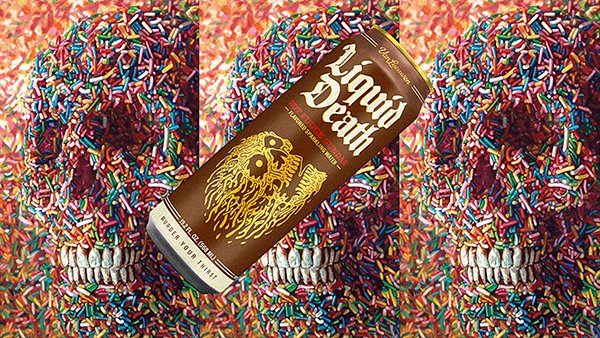
Yikes, looks like someone had a really bad time in the Sprinkle Pool.
“We’re all about making healthy beverages more fun,” said Liquid Death’s vice-president of marketing Greg Fass in a statement. “So teaming up with Van Leeuwen Ice Cream to make the first chuggable, 20-calorie hot fudge sundae was the perfect pairing.”
Gullable
There is nothing like spending a day by the seaside (and you can interpret that however you’d like). However, there can be one drawback, as Tippi Hedren could tell you: overly aggressive birds, especially if you are trying to eat lunch al fresco (or woo Rod Taylor). In St. Andrews, Scotland, seagulls are constantly swooping down and snatching food away from outdoor diners. It’s become such a serious problem that the Cheesy Toast Shack—a food truck—has attempted to solve it by playing recordings of predator birds to scare them away, but to no avail. So now they have come up with a way of helping customers at least compensate for it: seagull insurance. Via Boing Boing:
“The gulls are super aggressive and actually terrifying,” Kate Carter-Larg told Fife Today. We are a family run business and I can’t just sit and watch a sandwich get stolen and not replace it, so I’ll always give another for free. But it has been costing us a lot of money – people are even left bleeding after the gulls swoop for the food. We get old women emailing us saying: “I’ve nearly rolled my ankle because of seagulls’, we have children crying too from it.”
The solution?
rather than continue with the free replacements, they plan to offer seagull insurance. For £1 on top of the £6.75 sandwich price, customers will be protected in the event of a gull attack. Peace of mind. Piece of sandwich.
If they tried this in the US, customers would have to deal with deductibles, co-pays, and out-of-pita-pocket costs, with one sandwich plus insurance costing well over $5,000, and the possibility that their claim for a free replacement sandwich would be denied. We’ll take the gulls.
Mayo Clinique
Last week, we mentioned that Auntie Anne’s is releasing a pretzel perfume. However, if you’d rather smell a little eggier, why not try this new product from Hellmann’s: mayonnaise-scented perfume. Via (who else?) Food & Wine:
Hellmann’s has partnered with Tennessee Titans quarterback Will Levis to release Will Levis No. 8, a fragrance based on the smell of Hellmann’s signature product. The just-released scent combines hints of tart lemon, coffee, musk, vanilla, and something the company is calling “mayonnaise accord.”
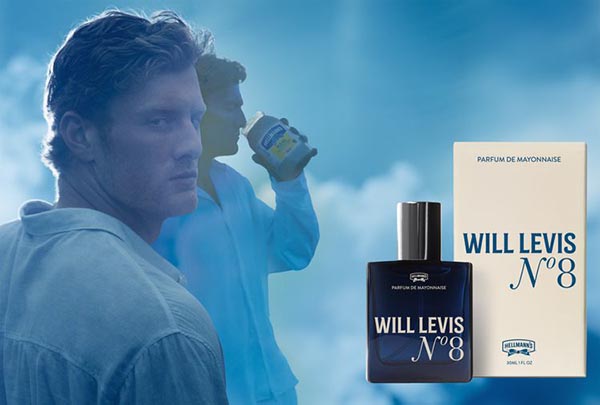
Do you spray it on or spread it with a knife?
If you want to get your hands on a bottle of Will Levis No. 8, it will be available for purchase starting at 8 a.m. on Tuesday, August 13 through Shopify. “The fragrance is everything I love about mayonnaise — creamy, smooth with notes of lemon,” he added, calling it “even better than I imagined.”
Nah, we’ll wait for Miracle Whip to come out with something.
This Week in Printing, Publishing, and Media History
August 19
1631: English poet, literary critic, and playwright John Dryden born.
1646: English astronomer and academic John Flamsteed born.
1662: French mathematician, physicist, and philosopher Blaise Pascal dies (b. 1623).
1839: The French government announces that Louis Daguerre’s photographic process is a gift “free to the world.”
1906: American inventor (the Fusor) Philo Farnsworth born.
1921: Star Trek creator Gene Roddenberry born.
1939: English drummer and songwriter Ginger Baker born.
1964: Syncom 3, the first geostationary communication satellite, was launched.
1977: American comedian and actor Groucho Marx dies (b. 1890).
August 20
1858: Charles Darwin first publishes his theory of evolution through natural selection in The Journal of the Proceedings of the Linnean Society of London, alongside Alfred Russel Wallace’s same theory.
1882: Tchaikovsky’s 1812 Overture debuts in Moscow, Russia.
1890: American short story writer, editor, novelist H. P. Lovecraft born.
1920: The first commercial radio station, 8MK (now WWJ), begins operations in Detroit.
1926: Japan’s public broadcasting company, Nippon H?s? Ky?kai (NHK) is established.
August 21
1888: The first successful adding machine in the United States is patented by William Seward Burroughs.
1952: English singer-songwriter and guitarist Joe Strummer born.
1961: Motown releases what would be its first #1 hit (in America), “Please Mr. Postman” by The Marvelettes.
2005: American businessman, founded Moog Music Robert Moog dies (b. 1934).
August 22
1485: “A horse! My kingdom for a horse!” The Battle of Bosworth Field, the death of Richard III and the end of the House of Plantagenet.
1849: The first air raid in history. Austria launches pilotless balloons against the city of Venice.
1862: French pianist and composer Claude Debussy born.
1893: American poet, short story writer, critic, and satirist Dorothy Parker born.
1902: Theodore Roosevelt becomes the first President of the United States to make a public appearance in an automobile.
1920: American science fiction writer and screenwriter Ray Bradbury born.
1971: American singer-songwriter and guitarist Craig Finn born.
August 23
1946: English drummer, songwriter, and producer Keith Moon born.
1966: Lunar Orbiter 1 takes the first photograph of Earth from orbit around the Moon (not Keith).

1973: A bank robbery gone wrong in Stockholm, Sweden, turns into a hostage crisis; over the next five days the hostages begin to sympathize with their captors, leading to the term “Stockholm syndrome.” (Some trade shows are like that.)
1991: The World Wide Web is opened to the public.
August 24
1456: The printing of the Gutenberg Bible is completed.
1891: Thomas Edison patents the motion picture camera.
1995: Microsoft Windows 95 is released to the public in North America.
1998: First radio-frequency identification (RFID) human implantation is tested in the United Kingdom.
August 25
1609: Galileo Galilei demonstrates his first telescope to Venetian lawmakers.
1835: The first Great Moon Hoax article is published in The New York Sun, announcing the discovery of life and civilization on the Moon. (No one would ever fall for something like that today.)
1867: English physicist and chemist Michael Faraday dies (b. 1791).
1900: German philologist, philosopher, and critic Friedrich Nietzsche dies (b. 1844).
1954: English singer-songwriter, guitarist, and producer Elvis Costello (né Declan MacManus) born.
1991: Linus Torvalds announces the first version of what will become Linux.
2012: Voyager 1 spacecraft enters interstellar space becoming the first man-made object to do so.




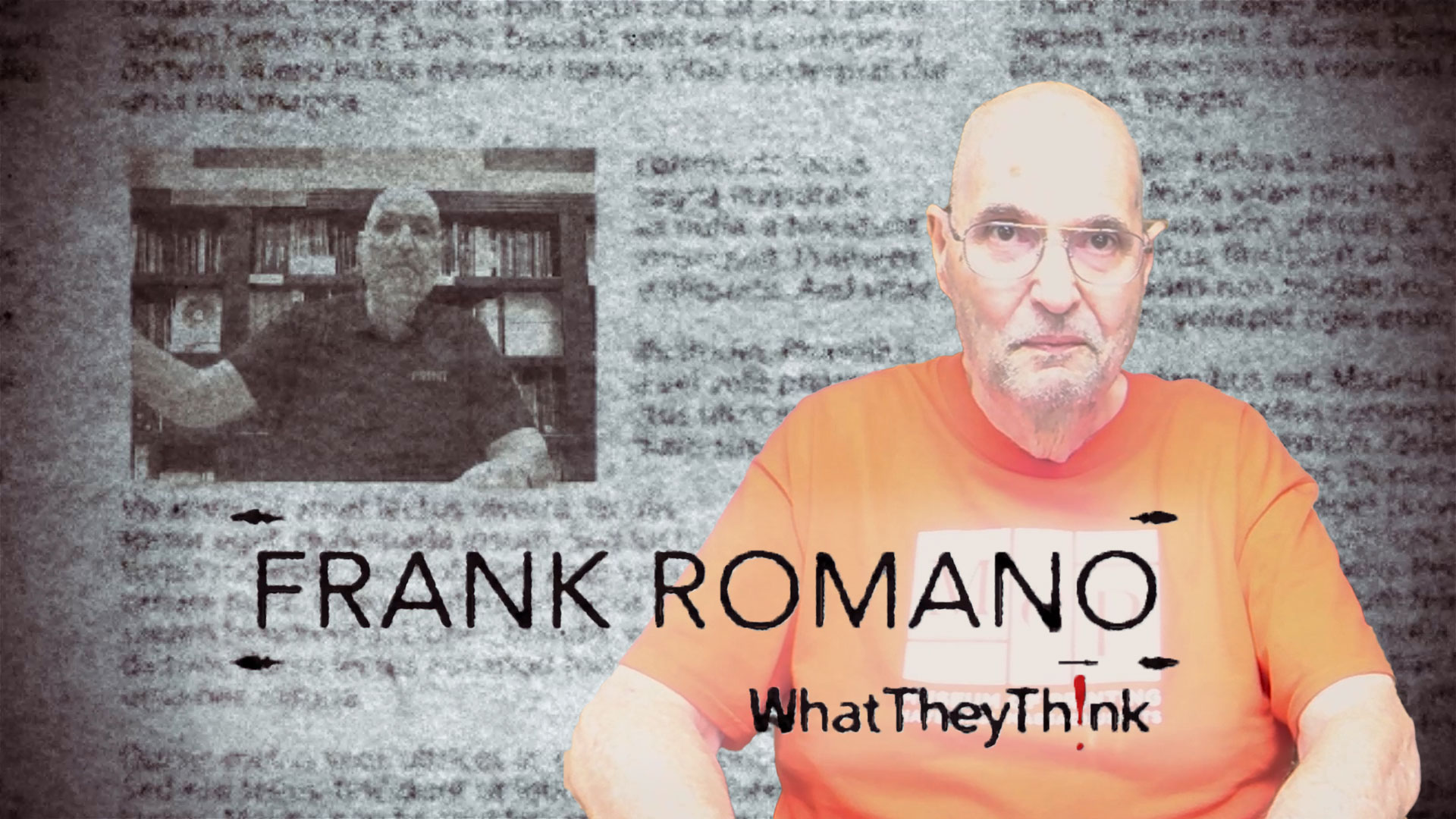










Discussion
Only verified members can comment.